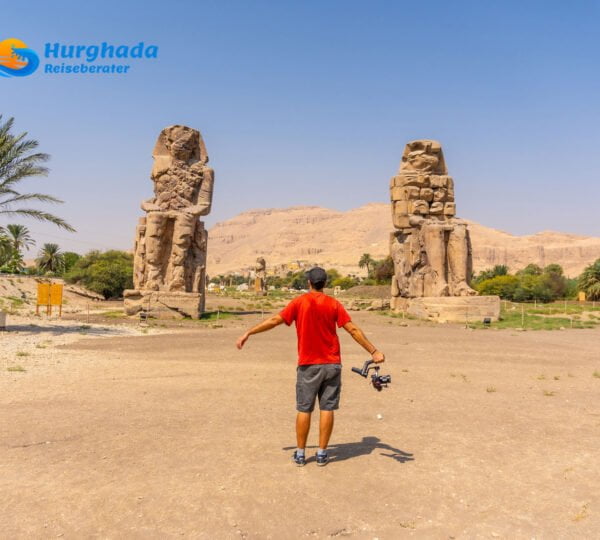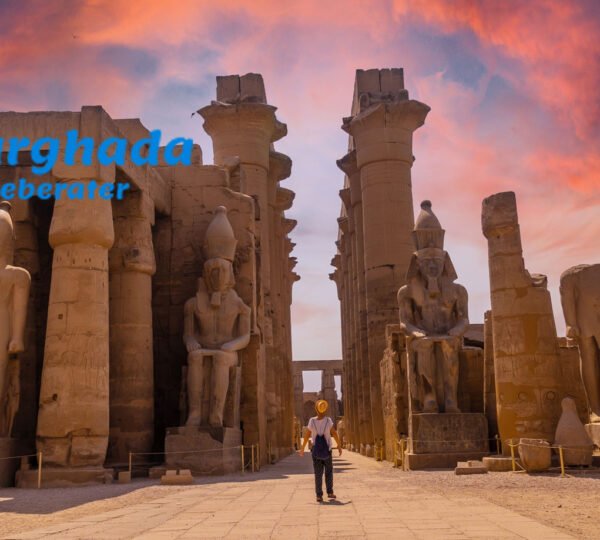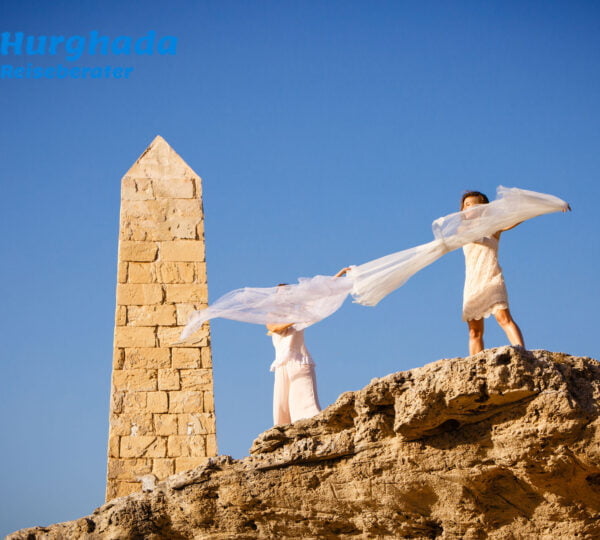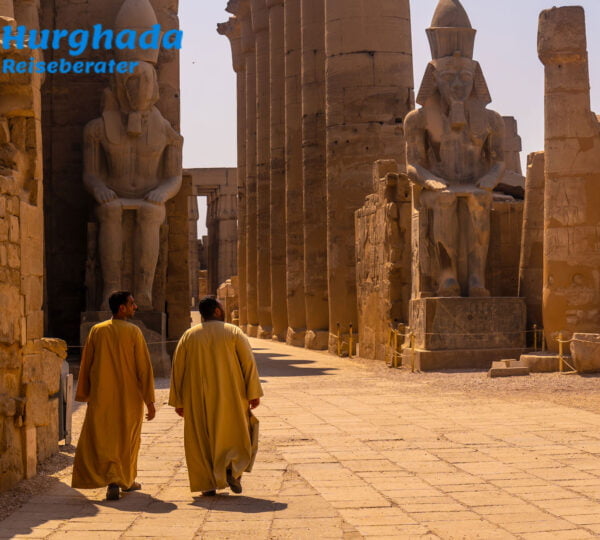Entdecken Sie Touren
On an interesting day trip from Hurghada to Luxor, you’ll get to know the City of Palaces, the former city of the pharaohs. Nowhere else in Egypt is such a witness to a glorious past as here. Luxor dates back to 2000 BC as a small village called Wasset. Colossal temples and immaculate works of art still bear witness to the grandeur and power of ancient Thebes, the magnificent capital of a bygone empire—as well as a cultural and economic center.
Day trip to Luxor from Hurghada
After crossing the Nile from east to west, you find yourself in the Valley of the Kings. Queen Hatshepsut, who reigned for almost a generation, chose a truly beautiful site for her terraced temple—a masterpiece of its time.
Day trip to Luxor Bus
The fairytale Colossi of Memnon are carved into the mountains above the Valley of the Kings. Remarkably, the natural colors of the various frescoes and reliefs, painted 3,000 years ago, are still visible, and you can admire them for yourself.
Day tour to Luxor from Hurghaada Bus
The Luxor day trip also includes a visit to the Karnak Temple. The Temple of Karnak is by far the largest temple complex in Egypt and the most important place of worship since the time of the pharaohs. It was built over 2,000 years ago. The Ram statue, also known as the Avenue of Sphinxes, awaits you in line. After the first tower, you will find the porch in the portico and its 134 columns with reliefs. Passing through the standing obelisk, you reach the sanctuary. Next to it is the sacred lake, once used for priestly bathing rituals and temple paraphernalia.
Child discount
0-2 years: Free
3-11 years: 50% discount
From 12 years: Full price
pay
Payment is made in cash upon collection and can be made in euros or dollars.
The price includes tax and insurance
Highlights
- Program of the day trip to Luxor from Hurghada by bus
- El Karnak Temple
- Hatshepsut Temple
- Valley of the Kings
- Colossi of Memnon
Eingeschlossen/Ausgeschlossen
- Karnak Temple, the largest sacred building of Amun-Re
- Colossi of Memnon
- Terrace Temple of Queen Hatshepsut
- Valley of the Kings
- A delicious lunch on the Nile
- Drinks in the restaurant
- Personal expenses
- Nile cruise costs 10 euros pp
- Guests from Marsa Alam pay 25€ per person transfer surcharge
- Guests of El Quseir pay 15€ per person transfer surcharge
- Guests from El Gouna pay 5 € per person transfer surcharge
Tourplan
Picked up by car in the early morning, take a modern and comfortable air-conditioned bus through Safaga and drive along the newly constructed desert road for approximately 225 kilometers to reach the Nile Valley in China. Along the way, you'll stop at a rest area to use the restroom or stretch your legs before driving to Luxor (approximately 60 kilometers). You'll pass many small and large towns on densely populated country roads, giving you a glimpse into the truly simple life of Egypt.
Now that we've arrived in Luxor (the world's largest open-air museum), you can enjoy your Luxor tour. Arrive after a short stop to visit the Temple of Karnak, arguably the largest temple complex in Egypt and the most important place of worship in ancient times.
The bus takes you to Thebes West, where you will enjoy a typical local lunch.
After lunch, explore the world-famous Valley of the Kings with an interior tour of the Royal Tombs.
Afterwards, you'll travel to the Terrace Temple of Queen Hatshepsut, who ruled for almost a generation. She chose a truly beautiful location for her terrace temple—a masterpiece of its time. An interesting spot for photographers to capture some great pictures.
El Karnak Temple is by far the largest temple complex in Egypt and the most important place of worship from the pharaonic period. It took over 2,000 years to build. Ram statues, also known as the Avenue of Sphinxes, line up for your viewing. After the first pylon, you'll find the Hypostyle Hall in the vestibule, with its 134 columns decorated with relief ornaments. Passing standing obelisks, you reach the sanctuary. Next to it is the Sacred Lake, used for the ritual ablutions of the priests and for the storage of temple utensils.
The fairytale Colossi of Memnon are carved into the mountain massif above the Valley of the Kings. The natural colors of the various wall paintings and reliefs, applied 3,000 years ago, are still visible and can be admired for yourself.











